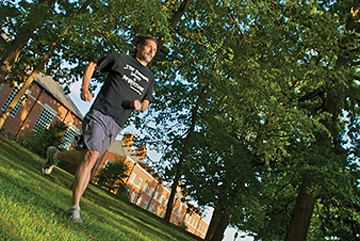






 |
||||
 |
 |
 |
 |
 |
 |
||||
|
J U N E 2 0 0 8 I S S U E The Big Question

Q:
What does a rocket scientist think about when he's not
building rockets?
1. A day off? How can I get a day off?Stephan R. McCandliss is a principal research scientist with the sounding rocket program in the Krieger School of Arts and Sciences' Department of Physics and Astronomy. The program seeks less expensive ways to test-fly new telescopes and observational tools. He has launched 14 sounding rockets since 1988, leading to observations of comets, planets, and nebulae. He is at work on a new astronomy instrument that would help a powerful telescope currently in development to interpret dust-sensitive Lyman-alpha emissions from the oldest star-forming regions in the most distant galaxies. "Knowing when the first dust forms sets a limit on how soon life can emerge," he says. "After all, the dust becomes us." — Michael Anft |
 |
|
 The Johns Hopkins Magazine |
901 S. Bond St. | Suite 540 |
Baltimore, MD 21231
The Johns Hopkins Magazine |
901 S. Bond St. | Suite 540 |
Baltimore, MD 21231Phone 443-287-9900 | Fax 443-287-9898 | E-mail jhmagazine@jhu.edu |
|